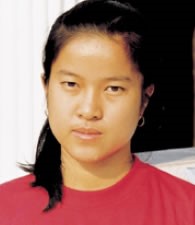The Duoluo are one of several distinct ethnolinguistic groups that have been combined to form the official Gelao nationality in China. In 1945 the Gelao were described as being part of the Lao race in China, which included the Mulao and Tulao.
The Duoluo were once the renowned leaders of the Yelang Kingdom, which ruled a large part of southern China. Prior to the advent of Chinese Communism in 1949, many Duoluo practiced child marriage. "To celebrate the marriage, the bride would walk with her relatives, carrying an umbrella, to the groom's home, where they would live apart from their parents."
When a Duoluo dies, a colorful funeral procession is staged. "Mourners dance in groups of three, one playing a lusheng (reed pipe), one beating a bamboo pole, the third brandishing a sword, and all singing as they dance. In other areas, the mourners sit in front of the coffin while family members of the deceased serve wine in gratitude to them. In some places, a shaman who chooses the time and place of burial recites scriptures at the grave. Animal sacrifice usually accompanies the burial. Trees, rather than stones, mark the grave."
Animism and ancestor worship are mostly practiced among Duoluo communities in the remote mountains. Most of the Duoluo living near townships have been thoroughly assimilated and have become non-religious.
There is believed to be a small number of Christians among the Duoluo today. Catholic mission work among the different Gelao groups started in the late 1800s. A Catholic church was soon built. Protestant work commenced in the early 1900s. In 1908, the first two Gelao living in the Miao area of "Heo-er-kuan" were baptized.
The Duoluos need the spiritual hunger it takes to embrace Christ no matter what the cost.
Pray for revival fire to consume Duoluo churches and families, drawing them into a close relationship with the only savior.
Pray for the Duoluo to send out disciplers to those without the gospel in Yunnan Province.
Pray for God s protection and goodness to permeate Duoluo families.
Scripture Prayers for the Duoluo in China.
Operation China, Asia Harvest, Copyrighted Used with permission.
| Profile Source: Joshua Project |










